In two photos, one from Jurassic World and one inspired by it, here’s the difference between what many clients want and what they’re willing to pay:
Found via J.C. Hutchins. Click the photo to see the source.
In two photos, one from Jurassic World and one inspired by it, here’s the difference between what many clients want and what they’re willing to pay:
Found via J.C. Hutchins. Click the photo to see the source.
This appeared on my LinkedIn feed this morning:
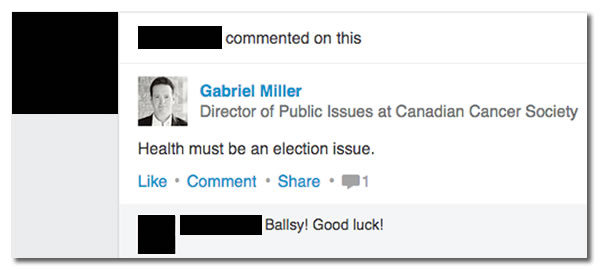
Commenter’s name redacted because everyone deserves a shot at online redemption.
In the end, the only reason LinkedIn has stayed a social networking site for professionals is that its users treat it as such. There’s lots of room for funny (or attempting-to-be-funny) replies in discussions on LinkedIn, but once the trolling begins, we lose a valuable forum for making those connections that make business possible.
(And seriously, trolling the Cancer Society? Ballsy! Good luck!)
This article also appears in The Adventures of Accordion Guy in the 21st Century.
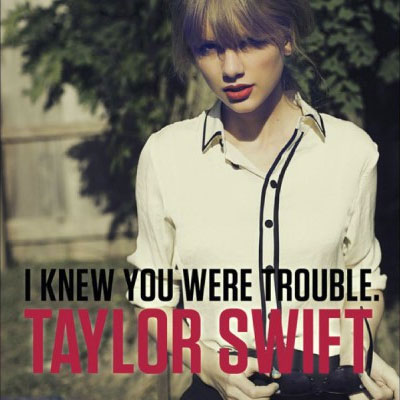
“But I say to Apple with all due respect, it’s not too late to change this policy and change the minds of those in the music industry who will be deeply and gravely affected by this. We don’t ask you for free iPhones. Please don’t ask us to provide you with our music for no compensation.”
If you read one article about Apple today, make it Taylor Swift’s piece about Apple not paying artists during the three-month trial period during which Apple Music will be free to users. If you read another, make it The Loop’s commentary on Swift’s piece.

Entrepreneur cites a couple of studies from last year that say:
They point to four reasons why BYOD — that’s short for “Bring Your Own Device” — boost productivity. If your organization already has a BYOD program, you’ve prObably already internalized these, and if not, you may want to think about them:
The trick is to make sure that you’ve thought out your organization’s approach to BYOD. A key part of this process is coming up with a set of policies on appropriate use of BYOD devices for work, and educating your users about these policies and how to use their personal mobile devices effectively and securely.
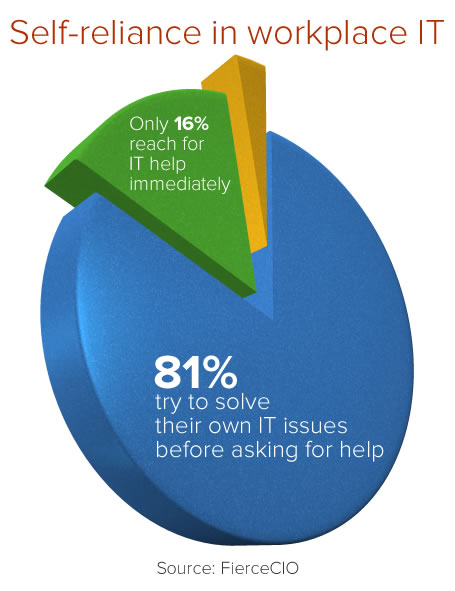
FierceCIO points to a recent study that features two seemingly contradictory observations about employees and their relationship with their companies’ IT departments:
In fact, going to IT for help with a technical issue isn’t the first thing most employees with tech troubles do. The vast majority prefer to take matters into their own hands:
The practical lesson that you should take from this data is that if you want happy, productive people with a minimum of downtime from tech issues, you should provide them with IT resources that enable them to help themselves, especially for issues that can be handled without IT department intervention. Simple “how-to” guides for common tech problems posted on an internal company site — perhaps even contributed to and edited by your employees themselves, and edited and enhanced by your IT department — are often all you need to help maximize uptime and free your IT team to work on the issues that can’t be dealt with by end users.
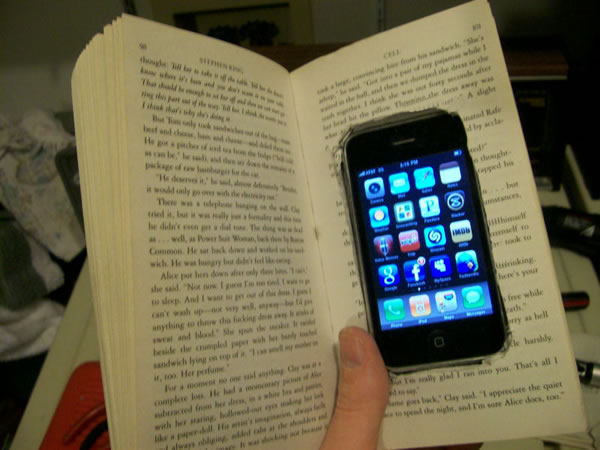
The downside of the growing tendency towards IT self-reliance is something that we like to call “SYOD”, short for “smuggle your own device”. That’s when employees use personal devices for work, accessing corporate online resources without the knowledge or approval of IT departments. Ernst and Young have pointed out that SYOD often arises in the absence of any BYOD program, and in 2013, research firm Ovum reported that:
If SYOD is happening at your organization, it means that there are needs that aren’t being met, and that people are being self-reliant, actively helping themselves and looking for solutions. This as an opportunity to help them, and perhaps even to recast IT as an enabler rather than a barrier.
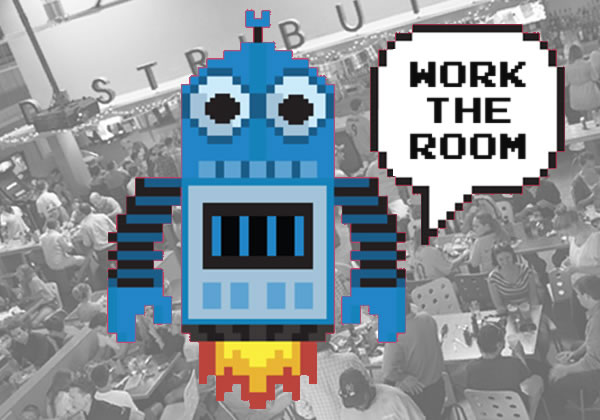
Here’s the third in a series of tips for making the most of your experience at the GIANT conference taking place this week in beautiful Charleston, South Carolina. In case you missed the prior ones, here they are:
Susan RoAne, author of How to Work a Room, has codified a technique for mingling at parties and conferences that I had to learn the hard way: breaking and entering. Here’s how it works:

As people who are already in a conversation, they’ve already done some of the work for you. They’re lively, which makes it more likely that they’re open to people joining in (and hey, this is GIANT. The attendees by and large are a friendly, lively, rad group). They’ve also picked a topic, which saves you the effort of hving to come up with one. It also lets you decide whether or not it interests you. If they’re lively and their topic of conversation interests you, proceed to step 2. If not, go find another group!
I know, this part might remind you of this introvert’s nightmare:
Click the photo to read the Onion article.
Just do it. This is a conference, and one of the attendees’ goals is to meet people. Smile. Pipe in if you have something to contribute; people here are pretty cool about that.
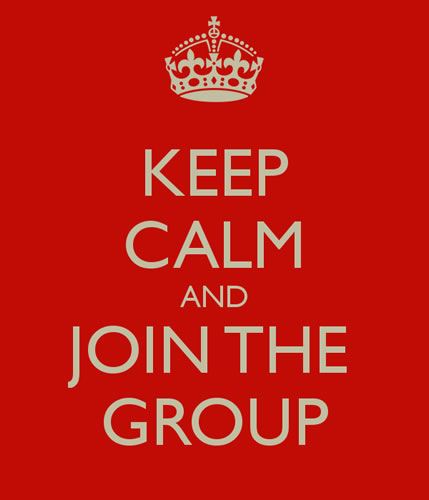
You’re in like Flynn! Step in confidently and introduce yourself. If you’ve got that one-line summary of who you are that I talked about earlier, now’s the time to use it.
Hey man, you’re guest at this convo, and you’re not campaigning. Contribute, and let the subject changes come naturally.
Now go forth and mingle. I’ll see you at the parties!
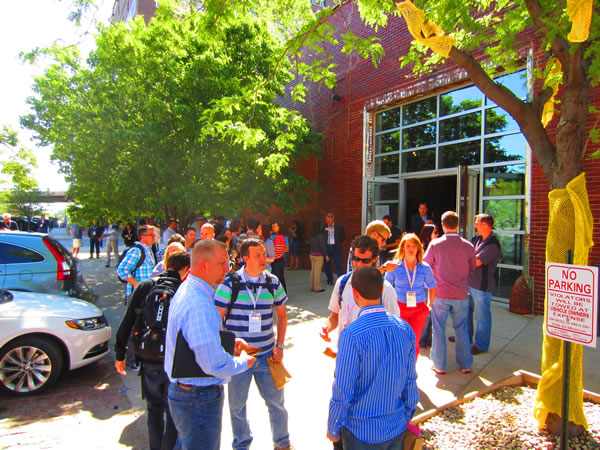
 Here’s the third in a series of tips for making the most of your experience at the GIANT conference taking place this week in beautiful Charleston, South Carolina. In case you missed the prior ones, here they are:
Here’s the third in a series of tips for making the most of your experience at the GIANT conference taking place this week in beautiful Charleston, South Carolina. In case you missed the prior ones, here they are:
The people behind GIANT are fantastic conference organizers; it’s my favorite conference since RubyFringe and FutureRuby, which were so mind-blowing that they led a number of attendees to quit their jobs and start their own Ruby-based companies. Those conferences had such a special vibe and brought together such great people, and GIANT is the only conference I’ve been to that captures that same feel.
Just as RubyFringe and FutureRuby brought together some of the coolest, smartest, most interesting developers you’ll meet, GIANT brings together some of the coolest, smartest, most interesting designers you’ll meet. In one way, really don’t belong here — I’m really a developer who turned into a marketing guy — but in another way, I really do. I’m an extrovert in a field where a lot of people tend towards introversion, and I serve a useful role here: I will introduce people here to other people.
Think of the parties that you enjoyed most. What made them so enjoyable? Was it the venue? The food? The drinks? The bathrooms? I’d lay good odds that what made the party enjoyable was the people.
The GIANT organizers know this, which is why they went to great lengths to make their conference attractive to “people who do rad work”, as they put it. They’d love to make sure that the rad people they invited mix and mingle, but they’re vastly outnumbered by their guests. They can’t do it alone. They need you to play host.
That means that if you see someone who’s standing at the periphery of the room, looking lost or lonely, walk up and introduce yourself! If you’re in a group conversation and see someone hovering at the periphery, invite them in! If you’re one of the fortunate people who knows other people at this shindig, do introductions! The best guests, the ones who get invited back to parties, the ones who strike up friendships and opprtunities, are the ones who also play the role of hosts.
See you out there at GIANT! I’ll be the one with the accordion, pretending to be a host.
 Here’s the second in a series of tips for making the most of your experience at the GIANT conference taking place this week in beautiful Charleston, South Carolina. In case you missed the first one, it’s over here.
Here’s the second in a series of tips for making the most of your experience at the GIANT conference taking place this week in beautiful Charleston, South Carolina. In case you missed the first one, it’s over here.
I was going to call it “your personal elevator pitch”, but that sounded a little too Silicon Valley (the TV show or the real place, take your pick) for me. So I’m calling it “your one-line self-introduction”.
A one-line self-introduction is simply a single-sentence way of introducing yourself to people you meet at a conference. It’s more than likely that you won’t know more than a handful of attendees and introducing yourself over and over again, during the conference, as well as its post-session party events. It’s a trick that Susan RoAne, room-working expert and author of How to Work a Room: The Ultimate Guide to Making Lasting Connections In-Person and Online teaches, and it works. It’s pretty simple:
Here’s the one-liner I’m thinking of going with: “I’m a rock and roll accordion player, but in my side gig, I help Fortune 500 companies with mobile and write mobile apps.”
I have an even better introduction for my accordion: “This? It’s social hardware.”
See you at GIANT!